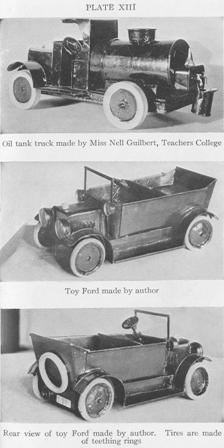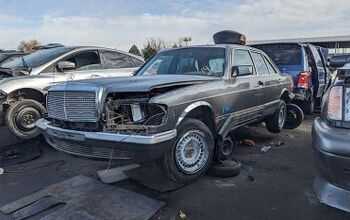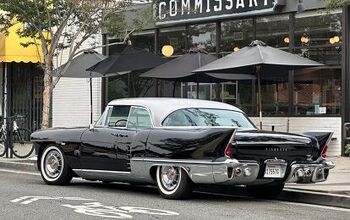"I'm Here to See Mr. Ford" - A Detroit Story

Henry Ford as a young man, circa 1883
One of my editors once described researching a topic as “falling down a rabbit hole.” Four hours later, you end up far afield from the 1963 Whizbang X500 you started with. You never know what you’ll discover that could be new to you or your readers.
While tracking down details on the 1:10 scale 1939 Lincoln Continental styling model that sat on the desk of Edsel Ford —whose idea the Continental was — I heard a great story involving his father, Henry, and the clay modeler, Larry Wilson, who later discovered Edsel’s Continental clay styling model forgotten in storage.
It’s a true story about a 15-year-old boy who took a train ride to ask Henry Ford for a job and, as far as I know, it’s never been published before.
It’s hard to imagine the magnitude of Henry Ford’s fame. It’s also hard to separate fact from PR fiction that was spun in Henry’s interest by Ford Motor Company’s Publicity Department, but some of it was, at least, partially true. (For instance, it’s said the post office once delivered a letter to Henry Ford that had no address, just the industrialist’s photograph from a newspaper clipping glued to the envelope.)
FoMoCo’s PR machine cultivated the image of Henry as everyman, so the idea that a 15-year-old boy might think he could travel across the country to meet him wasn’t as silly as it might sound today. Also, a 15 year old in the mid to late 1930s likely grew up a bit faster than today’s precious little snowflakes. After a prolonged Great Depression, young people were probably a bit more self reliant then, too.
Anyhow, the way his friend, automotive historian and collector Samuel Sandifer, tells the story, Larry Wilson spent his entire career as a clay modeler for Ford Motor Company after being hired by Henry Ford himself.
Growing up far from the Motor City, Wilson desperately wanted a career in the auto industry. Using what materials and tools he had at his disposal — tin cans, hammers and tin snips — he had made two fairly realistic scale models of 1938 Ford sedans. Perhaps he had read Edward Thatcher’s 1919 do-it-yourself guide, “ Making Tin Can Toys“. Those self-reliant youths of yore made a lot of their own toys. People still make model cars (and other models out of metal cans) for pleasure and for profit.
From Edward Thatcher’s “Making Tin Can Toys”
Wilson set off on his journey to Dearborn.
Taking a train first to Chicago and then to Dearborn, he somehow managed to talk his way into the executive offices at Ford’s headquarters and found himself in front of Henry Ford’s personal secretary.
“Who are you here to see?” she asked him.
“I’m here to see Mr. Ford,” he replied earnestly.
“Do you have an appointment?”
“No.”
“Well,” his secretary told young Wilson, “Mr. Ford is a very busy and important man and he doesn’t just see people without an appointment. If you’re looking for a job, I can give you directions to the employment office.”
Dejected, Wilson departed, but as he started down the hallway, in the other direction was walking a thin, older gentleman wearing a straw hat.
The man stopped Wilson and asked him, “Young man, what are you doing here?”
“I’m here to see Mr. Ford.”
“Henry Ford?” the older gentleman asked.
“Yes,” Larry replied, “Henry Ford.”
“Well that’s me. Why did you want to see me?” the industrialist asked.
Wilson unwrapped his two tin models and told Ford of his dream of making cars. Impressed with the quality of the work, and perhaps reminded of his own youthful enthusiasm, Ford hired him on the spot as an apprentice model maker.
Though you might think the story is apocryphal, the protagonist is identified by name and the story teller is someone with some credibility as an automotive historian. It also has a ring of truth. At the age of 16, Jack Telnack, who later headed Ford design, got an interview with Ford advanced styling head Alex Tremulis because of his interest in becoming a car designer. Tremulis told him to go to design school and then gave Telnack his first job when he graduated. A number of designers working for General Motors and other domestic automakers got their starts as teens competing in GM’s Fisher Body Craftsman’s Guild model making competition.
After Henry Ford hired him, Larry Wilson would go on to spend his entire career as a clay modeler in Ford’s styling department. Once, while going through some stored materials, he came across the contents of Edsel Ford’s personal office, removed after his 1943 death. Among those artifacts was Edsel Ford’s personal 1:10 scale model of the original Lincoln Continental, sculpted by Gene Adams, the clay modeler who worked with stylist Bob Gregorie on the Continental’s design. It wasn’t quite the first model of the Continental — that one was sculpted by Gregorie and Adams over an existing Lincoln Zephyr model — but it was likely used to develop the bumpers and trim on the production car. The fact that it was the personal property of Edsel Ford gives it unmatched provenance.
Wilson eventually passed the model to Sandifer, where it is part of what is likely the largest collection of styling studio scale models anywhere.
Ronnie Schreiber edits Cars In Depth, a realistic perspective on cars & car culture and the original 3D car site. If you found this post worthwhile, you can get a parallax view at Cars In Depth. If the 3D thing freaks you out, don’t worry, all the photo and video players in use at the site have mono options. Thanks for reading – RJS

Ronnie Schreiber edits Cars In Depth, the original 3D car site.
More by Ronnie Schreiber
Latest Car Reviews
Read moreLatest Product Reviews
Read moreRecent Comments
- Lou_BC Well, I'd be impressed if this was in a ZR2. LOL
- Lou_BC This is my shocked face 😲 Hope formatting doesn't fook this up LOL
- Lou_BC Junior? Would that be a Beta Romeo?
- Lou_BC Gotta fix that formatting problem. What a pile of bullsh!t. Are longer posts costing TTAC money? FOOK
- Lou_BC 1.Honda: 6,334,825 vehicles potentially affected2.Ford: 6,152,6143.Kia America: 3,110,4474.Chrysler: 2,732,3985.General Motors: 2,021,0336.Nissan North America: 1,804,4437.Mercedes-Benz USA: 478,1738.Volkswagen Group of America: 453,7639.BMW of North America: 340,24910.Daimler Trucks North America: 261,959



































Comments
Join the conversation
Why start and end a story about a scale model without showing a picture of the model in question?
Ronnie, this is a great article and thanks. It must be difficult to write about a man like Ford, who was such an anti-Semite. A young man I worked with wrote a paper in H.S. abut that subject. Per him , the teacher was not to thrilled. As for where this comments went, I have a place I see in my memories. It is the intersection of North, Grand and Kostner in Chicago's West side. At one time there was within eyesight: Factories for Zenith Televisions, Helene Curtis (Suave) shampoos, Continental Can (where my father worked for 33 years) and Schwinn Bicycles. There was also Pepsi bottling plant and one of the largest Jewel Food stores in the area. Today. the Jewel and Pepsi plant are boarded up, Zenith and Schwinn are part of brands in Korea, a Walmart stands where Continental Ca stood and Helene Curtis is long gone. Where once there were good paying jobs and properity now lies poverty. Welcome to the New Millenium??